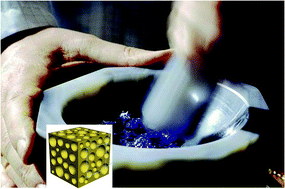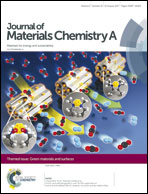Mechanochemical synthesis of porous organic materials
Abstract
Porous organic materials (POMs) are of growing interest due to their potential uses in gas adsorption, separation, and catalysis. In comparison to porous inorganic materials (e.g., zeolites and metal oxides) or inorganic–organic hybrids (e.g., metal–organic frameworks), POMs possess a number of advantages, such as being composed of only light elements, possessing accessible functionality for organic reactions, having high stability in air and at atmospheric moisture levels, and possessing chemical robustness to acids and bases. Borrowed from the rich library of organic chemistry, various reaction routes like Sonogashira–Hagihara coupling, Yamamoto polymerization, Suzuki couplings, oxidative polymerization, the trimerization reaction of carbonitriles, solvothermal radical polymerization, and the imine condensation reaction, to name just a few, have been used to construct POMs. Not surprisingly, nearly all chemical transformations for POM construction proceed via solution-based synthesis methods. Just recently, much interesting progress on the mechanochemical synthesis (MS) of POMs has been made, highlighting the unique features of this method, such as solvent-free processing and fast reaction rates. In this mini-review, we wish to summarise the recent advances on the design of polymers of intrinsic microporosity, covalent–organic frameworks, covalent triazine-based frameworks, ordered mesoporous polymers, and ordered mesoporous carbons via MS. A brief comment about the MS of POMs in the future will also be discussed.

- This article is part of the themed collections: Recent Review Articles and Green Materials and Surfaces


 Please wait while we load your content...
Please wait while we load your content...